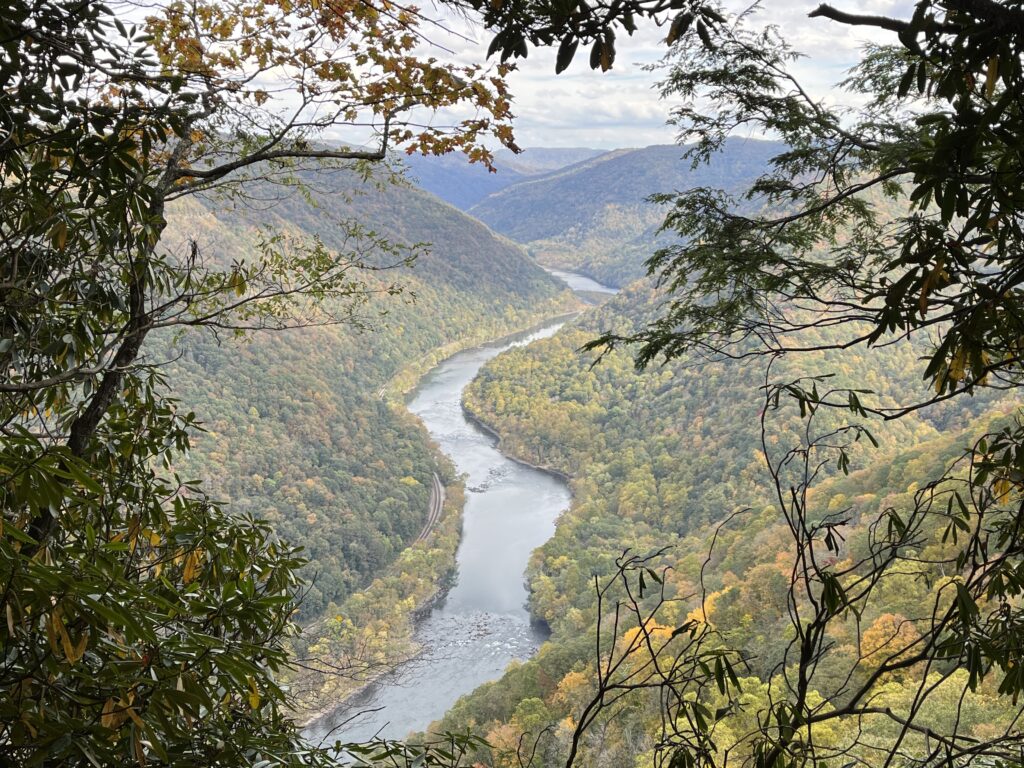We were fortunate to visit the Cuyahoga Valley and New River Gorge National Parks during peak leaf peeping time during mid-October. Both parks featured beautiful foliage, hills/mountains, water, and interesting history. They are relatively new and unlike most National Parks in the West, they were formed around “existing civilization”. As a result, their borders are a bit serpentine and have a lot of roads, residences, and some businesses inside park boundaries.
Cuyahoga Valley was named a National Park in 2000 and is located halfway between Cleveland and Akron, Ohio. It straddles the Cuyahoga River and the abandoned Ohio and Erie Canal. The canal was built just after the Erie Canal in the early 1800’s and connected Cleveland (at Lake Erie) to the Ohio River. It provided a major transportation highway to move materials to and from the Midwest and had a big impact on the westward movement in the late 19th century. In the early 1900’s the canal became unsustainable and was abandoned. Today, the canal towpath trail extends over 90 miles and runs through the center of the park.
The drive for a Cuyahoga national park started in earnest in the 60’s when the locals became concerned that the beauty of the area would be consumed by development. This was followed by public outrage at the Cuyahoga River pollution from heavy industry in the 60’s. After, the famous “burning river” incidents of 1952 and 1969, The Federal Government stepped in and the area was turned into a National Recreation Area. Since then, it has been de-toxified, returned to nature, has become a refuge for wildlife, and ultimately promoted to a National Park.
New River is a story of reclamation. A hundred years ago, the entire area was dominated by coal mining and foresting. Ironically named, the New River is the second oldest river in the world dating back 300 million years. It is surrounded by mountains that contained some of the best coal in the nation. It brought miners, the lumber industry, and railroads in starting in the 1870’s and endured until the late 50’s. By the time the National Park Service took over the area in the 1978 it was a moonscape full of small abandoned and crumbling towns along the river. A significant amount of work was done by Federal, State, and Local governments to restore the gorge over the last 50 years culminating in the promotion to a National Park in 2020. It is now a lush and beautiful place with hiking, biking, rock climbing, white water rafting, and incredible views. There are interesting ruins from abandoned towns and mines to explore as well as an artist collective with kinds of cool art forms. In retrospect, we should have spent more time here as there is a lot to see and do.




























